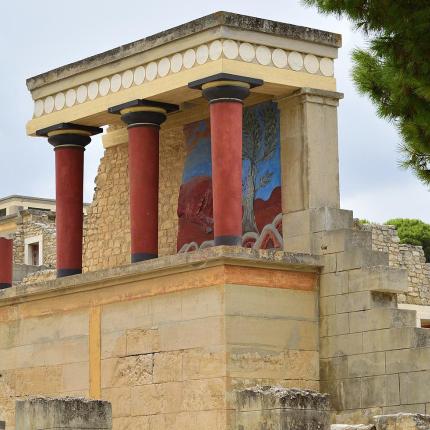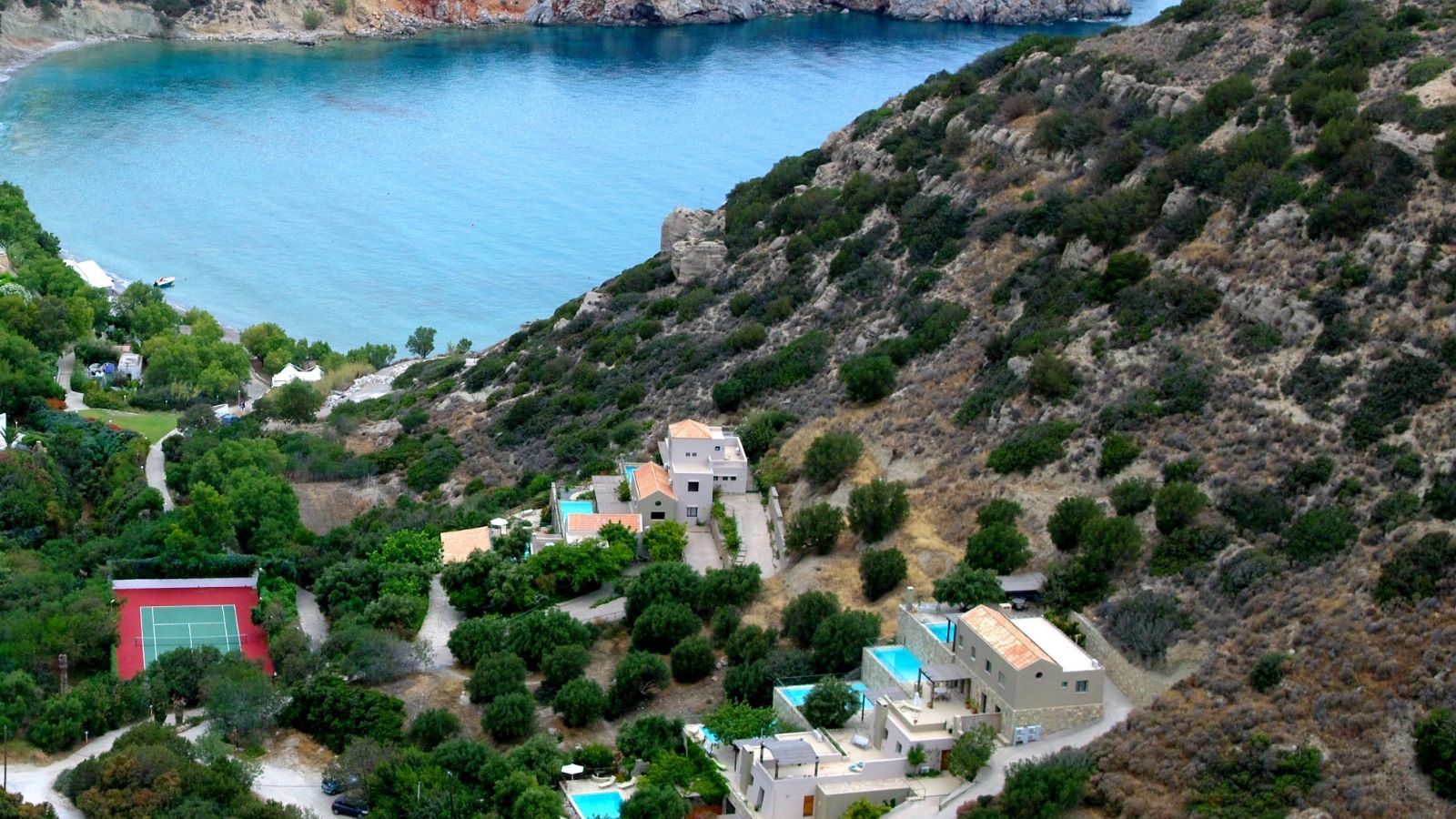Κnossos
The name Knossos survives from ancient Greek references to the major city of Crete. The identification of Knossos with the Bronze Age site is supported by tradition and by the Roman coins that were scattered over the fields surrounding the pre-excavation site, then a large mound named Kephala Hill, elevation 85 m (279 ft) from current sea level. Many of them were inscribed with Knosion or Knos on the obverse and an image of a Minotaur or Labyrinth on the reverse, both symbols deriving from the myth of King Minos, supposed to have reigned from Knossos.[5] The coins came from the Roman settlement of Colonia Julia Nobilis Cnossus, a Roman colony placed just to the north of, and politically including, Kephala. The Romans believed they had colonized Knossos.[6] After excavation, the discovery of the Linear B tablets, and the decipherment of Linear B by Michael Ventris, the identification was confirmed by the reference to an administrative center, ???, ko-no-so, Mycenaean Greek Knosos in Linear B, undoubtedly the palace complex. The second palace was built on a much grander scale over the old Palace after an earthquake destroyed it. The structure and ruins we see today are from the second Palace. During the Bronze Age, the town surrounded the hill on which the palace was built.
Photo by : Theofanis Ampatzidis
For more information click here.
Distance maps from Istron Villas
What's included: If you can spend one day for a trip to Knossos and the Heraklion Museum, do not miss it: It's a lifetime experience!


